Your Essential Sales Enablement Checklist for 2025
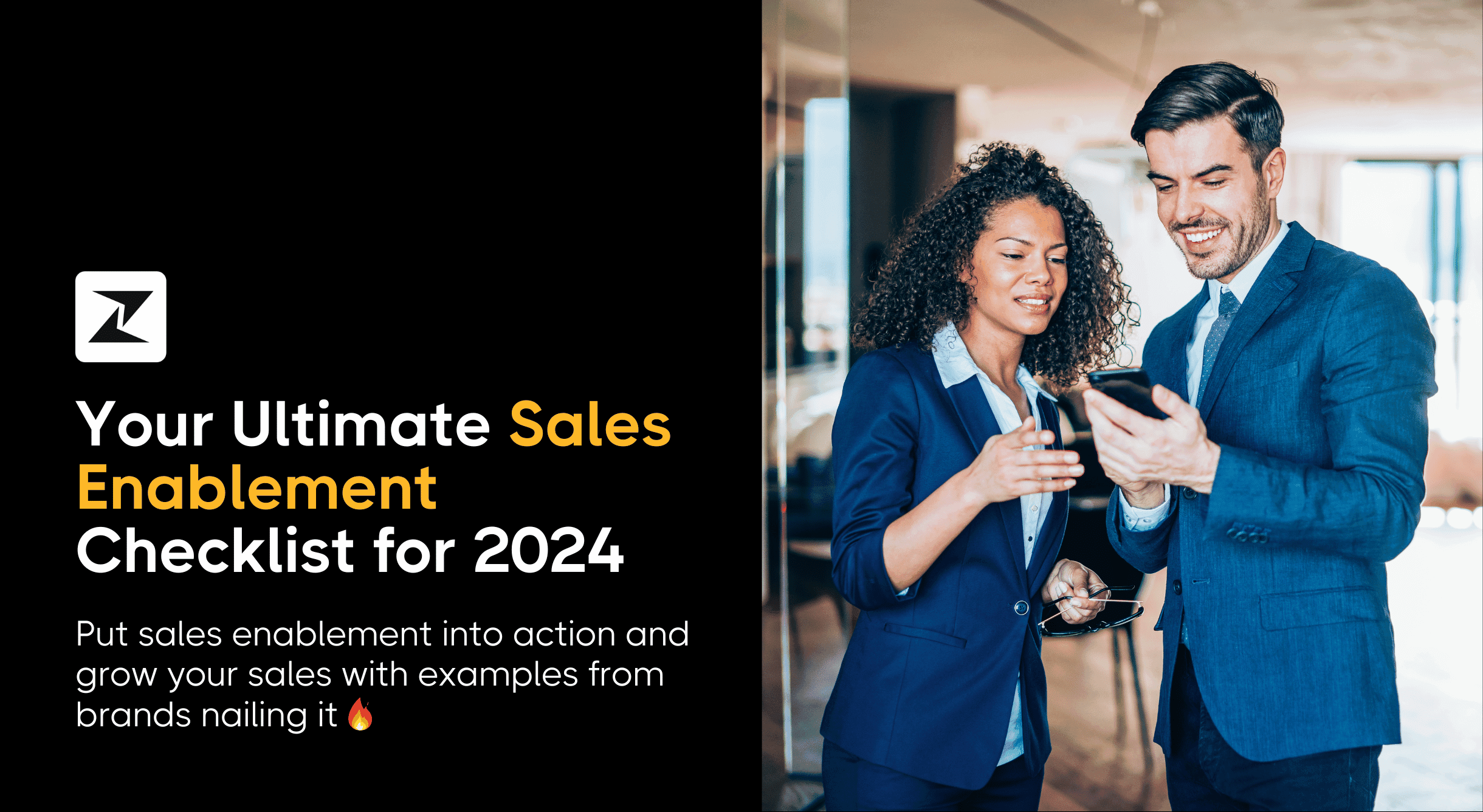
A solid sales enablement program can enable your sales team to deliver excellent sales experience, simplify the sales process, and boost your revenue. In fact, as per CSO Insights, businesses that have outlined a clear sales enablement process got a revenue hike of over 24%.
A concrete sales enablement framework can let your sales team not only be more productive but also effective. In this post, I’ll go over the sales enablement checklist to empower your team, streamline your sales process, and finally, close more deals.
By using these key practices, you will be able to provide your sales desk with the correct technology and materials to succeed in this competitive market. So, let’s get started!
What is the sales enablement process?
Sales enablement is an ongoing process where you provide your sales team with the needed knowledge and training to be able to market your products and services more effectively. This enables you to create an aligned sales enablement ecosystem that is crucial for your sales team to stay on top of all the challenges they might face during any stage of the sales pipeline.
The sales enablement process usually involves content development, training, creating sales documentation, and aligning your marketing and sales divisions.
Sales enablement checklist
A sales enablement checklist lets you keep track of things you have to do to implement a solid sales enablement process. It is the roadmap that allows you to equip your sales team with the right resources, which in turn, lets you generate more revenue. With that said, let’s look at the sales enablement checklist starting with clearly determining your objectives.
Define clear goals
First things first, determine your goals. Your sales goals need to be aligned with your overall business objectives and they should be measurable.
Setting Sales goals give direction to your company and help you in achieving actual results that will grow your business. That’s why, ensure that your goals are realistic and achievable. Setting unreasonable goals will only bring you disappointment when you fail to achieve them.
Thinking about doubling your revenue within one month is an unrealistic goal. Instead increasing your sales revenue by 15% over the period of six months is much more specific and is an achievable objective.
Identify your buyers
After setting your sales goals, you have to identify the people or businesses who might be interested in your offerings. Knowing who your target audience is and understanding sales psychology is crucial in finding out their pain points and tailoring your outreach campaigns to engage with them effectively.
Not only will you be able to get more leads, but by figuring out your target market, you will have quality interactions with customers, leading to better customer retention rates in sales.
So you need to create comprehensive buyer personas to find out your ideal customers. These personas are fictional depictions of your buyers and include their demographic details, problems they might face, and their purchasing habits.
The data mentioned in buyer personas allows your sales team to customize the sales cadence and relate to the particular requirement or preferences of your customer.
Provide product training
Product training is the process of providing knowledge about your product and its features to your sales team so they can not only better understand your product but also provide solutions to your customers’ specific problems.
For example, you can provide all the information about your product or service to your sales team by using product documentation. These documents include written content describing your product along with product videos to tell your sales desk about the settings or how to use a particular feature.
To create your product documentation, consider hiring content writers or outreach this part to a content writing agency. Once the content is ready, upload it to a platform so that it is available to everyone.
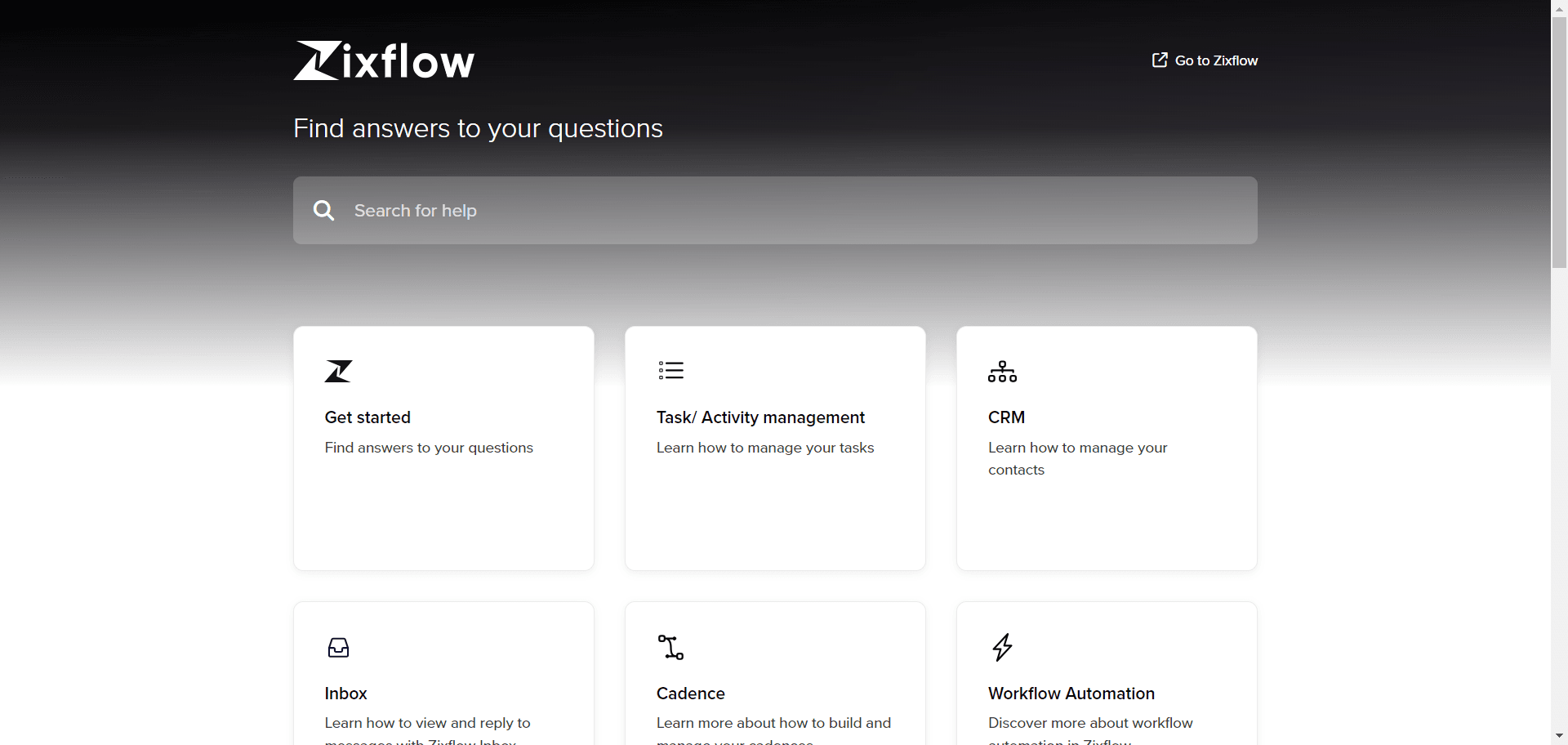
Create sales documentation
Sales collateral or sales documentation is the set of documents or resources that allows your sales reps to understand the sales process and help them if they get stuck.
Sales documentation is the reference guide that lets your sales team effectively communicate and provide information to potential customers during the sales cycle. This documentation can include various documents, such as:
Sales scripts
A sales script is a group of documents that contains predefined interactions or scenarios like sales qualifying questions which your sales team can use if they face a similar situation. Sale scripts are critical for your sales process as they let your sales reps stay concentrated on going through the important points when engaging with prospects.
Sales scripts can differ based on the channels you are using. But if you want to create a sales script for outreach, check out this video.
Sales playbook
The sales playbook is at the core of your sales process. It is a document that contains details about your sales process and the best practices your sales staff needs to follow. Sales playbooks showcase your approaches for different types of sales into a single concrete document that your sales team can go through and utilize in their everyday tasks.
For instance, AIG is a multinational insurance company that offers various insurance types and similar financial solutions. It uses a sales playbook that is eye-catching and breaks the long lines of text using graphics and bullet points so that the sales team can understand the information quickly.
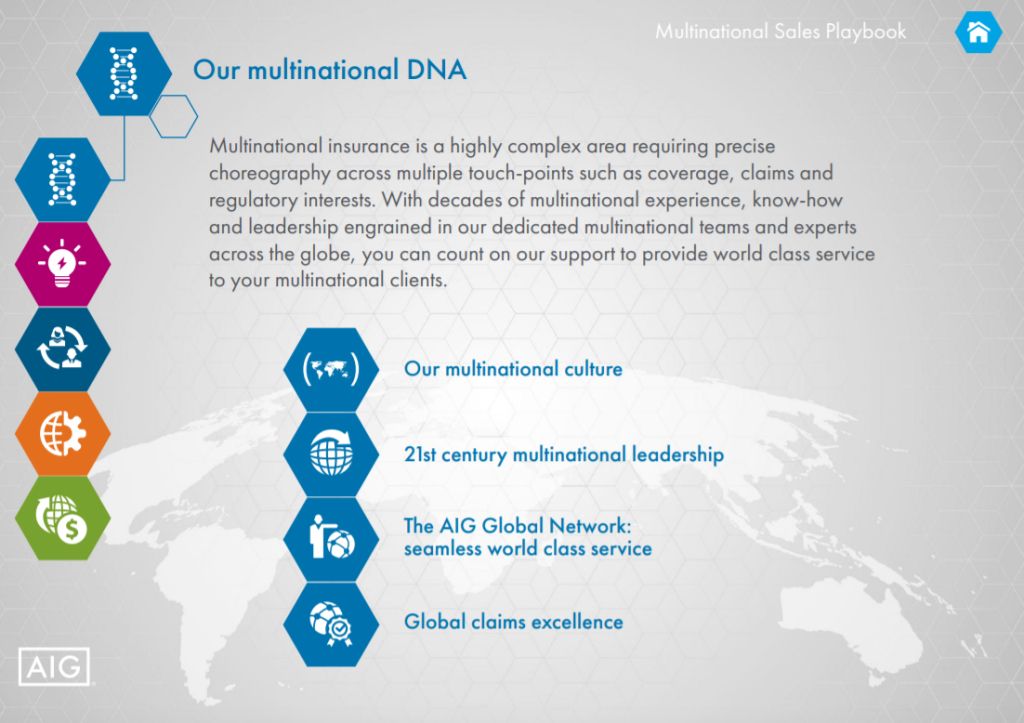
Case studies
As you might already know, case studies are stories or solid proof that our offerings have actually helped your customers solve their issues. A good case study is always about your customers and the benefits they got from using your business’s products and services. Remember that the emphasis is on the benefits or advantages rather than your company.
Case studies are an excellent way to tell your prospects that your product has helped your previous or current customers and has proven results.
Just like how Adobe solved the issues of the Royal Bank of Scotland (RBS.) Adobe had to remove the broken processes and help RBS provide online functionality to its clients. In the end, Adobe was able to boost the conversion rate by 20%.
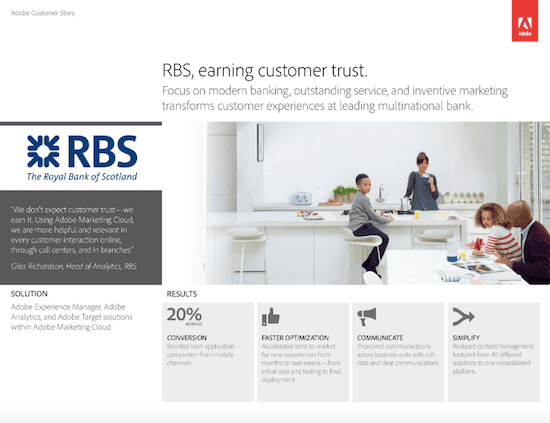
Utilize a SalesOS such as Zixflow
CRM software is a thing of the past. If you want to be on par with other companies in today’s digital age, you need a modern salesOS like Zixflow. It is a 360-degree sales solution for pipeline management that lets you not only compile your buyers’ information in a centralized database but also take useful actions on this data.
Not just that. By using Zixflow, you can automate your outreach by utilizing the sales cadence tool. It allows you to streamline your communication with prospects without manually keeping track of which prospects you need to engage and when.
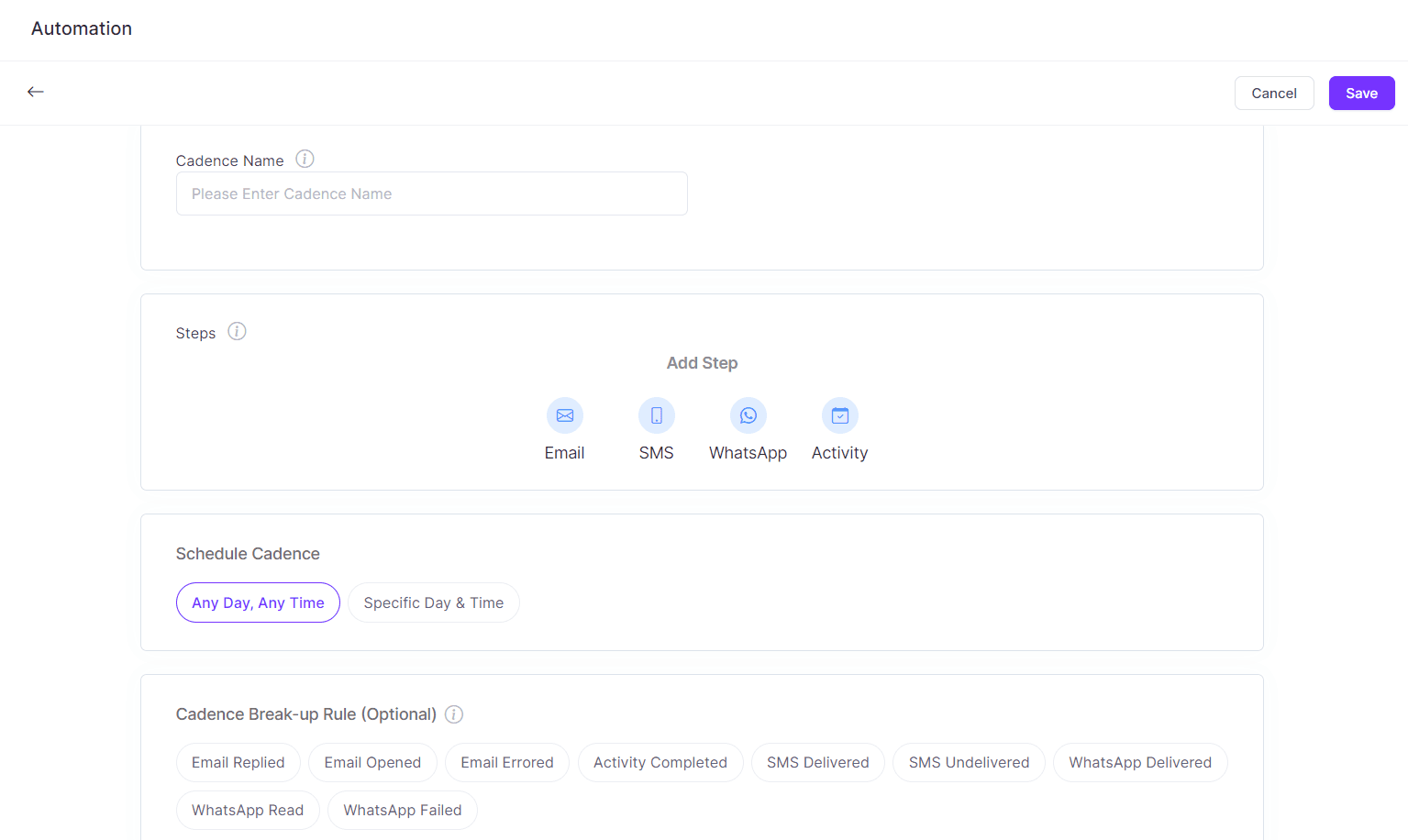
Plus, the saved customer data provides you with a holistic view of every prospect, and using Zixflow, you can send personalized emails for targeted interactions.
Set up a lead generation process
The lead generation process involves attracting and identifying potential customers (leads) who have shown interest in your products or services. It consists of a combination of sales and marketing techniques to interest and get the contact details of people who can become customers. Lead generation is an important aspect of sales strategy for companies across various industries.
And one way to generate more leads for your business is by using a lead-generating chatbot. Lead bots are chatbots that automatically generate leads by providing answers to people’s questions and getting them familiar with your offerings.
Another way to get more leads is to build a systematic lead generation process. This process can include strategies for inbound marketing, outbound prospecting, or marketing partnerships.
Inbound marketing
Inbound marketing is an approach where you try to attract your target market by reaching out to them and guiding them across the stages of the sales pipeline until they become customers. This methodology mostly focuses on engaging your existing audience rather than actively going out trying to find leads.
You usually utilize your owned channels, such as your blog and social media channels to interact with your target market by creating quality blog posts or engaging social media posts. For example, this is the Twitter page of Zixflow where you can find engaging posts and interesting conversations.
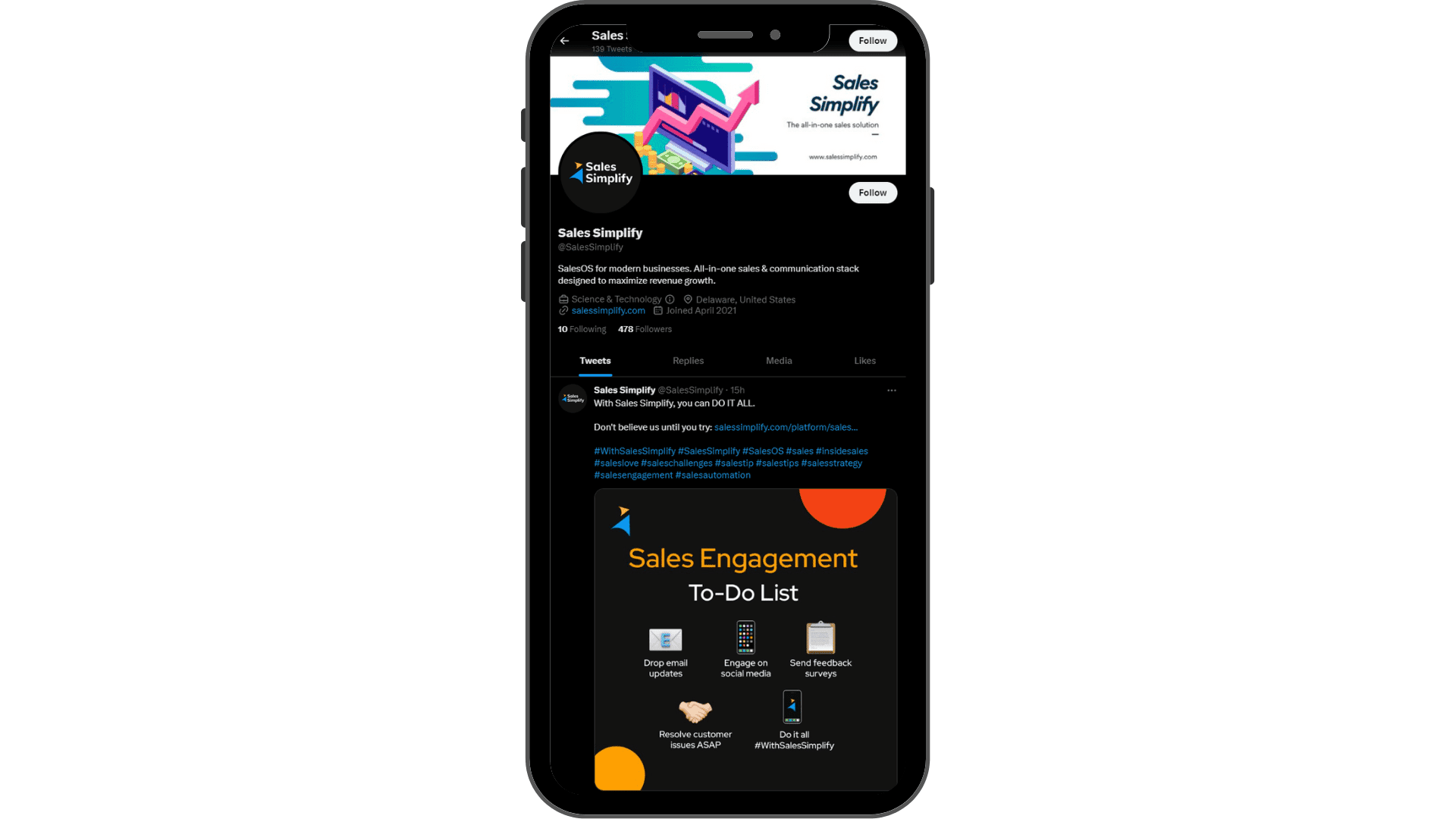
Inbound marketing requires you to convert your target audience into customers. For that, you need an inbound sales platform like Zixflow that lets you send personalized messaging across multiple channels and turn visitors into buyers.
Outbound marketing
In contrast to inbound marketing, outbound approaches require you to actively contact people, who can be part of your target audience or not, and try to sell your products to them. The channels used for outbound marketing involve cold calling or emailing.
Check out below how Xactly, a SaaS company that offers cloud-based enterprise software, sends outreach emails to market its compensation platform. The email starts with a problem that their prospects might have. Next, they introduce their product that will help the prospects solve the above-mentioned problem. And finally, they highlight the benefits while also asking for a 15-minute meeting.
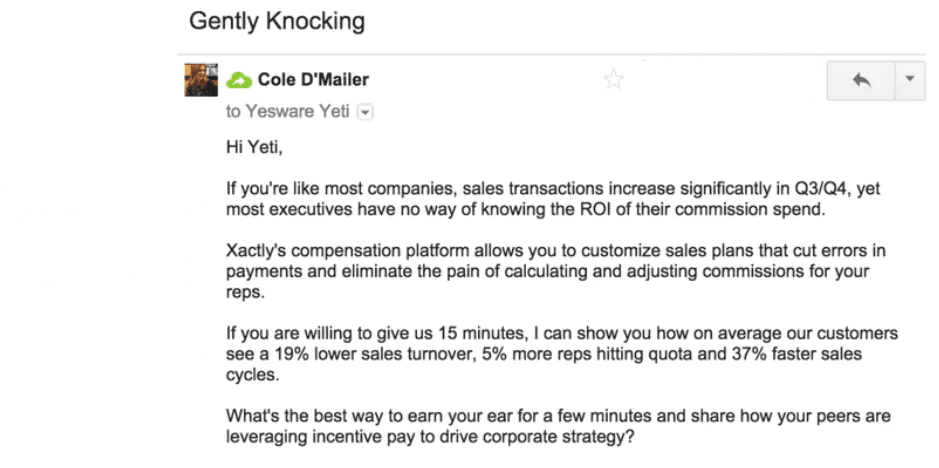
Outbound marketing is more difficult to pull off than inbound marketing because, unlike inbound where the prospect is already familiar with your company, in outbound you have to reach out to people who might have never heard of your business before.
Nonetheless, it is an essential part of sales strategy, and you should not overlook it. For this reason, you can use outbound sales software like Zixflow, which enables you to run campaigns to transform cold leads into warm ones.
Partnership marketing
As you might have understood from the name, partnership marketing or co-marketing involves you partnering with another company that is not your competitor to promote each other's products to your respective audiences.
Partnership marketing is relatively cost-effective because you and your partner usually divide the cost of running promotional campaigns. For example, you can pool together the data you have to run mobile campaigns across the SMS channel. And you can do the same for the email channel. Then, you can share the leads that are acquired through these initiatives.
So if you want to go this route rather than reaching out to your audience directly, you first have to find a company that is not your competitor but would benefit from your audience. After that, you can contact the decision makers in that company and submit a proposal about partnering up with them.

EE, a UK-based telecommunication company that offers mobile network and internet services, along with Apple, had a co-marketing partnership for a long time where the new subscribers of the mobile phone network EE receive a free membership of Apple Music for half a year.
The reason this partnership is so strong is that giving a free subscription to Apple Music with billions of soundtracks gives a competitive advantage to EE.
Meanwhile, for Apple, offering free access to otherwise a paid service provides a great opportunity to promote its music services and let potential customers get a taste of its platform, hoping that some of these free users will convert into paid subscribers after the initial offer of six months expires.
Enable effective communication
The next thing to check in your sales enablement checklist is to ensure that you implement a solid communication system. With a system in place, your teams can properly converse about their work or experiences, which will help in developing a knowledge-sharing culture within your company and keep everyone on the same page.
So if you want to set up an effective communication process, you first need to determine the channels via which you will communicate. Some of the most common communication channels include live meetings, text messages, or recorded videos.
And you don’t have to send back-and-forth emails to schedule a meeting that fits everyone’s calendar. With Zixflow's automated meeting scheduler, you can book meetings for global time zones and it will smartly adjust the time slots for every attendee.
On top of that, the in-built sales CRM helps in enabling communication because all your leads’ data is stored in the CRM, which is accessible to every member of the sales team. This way, your reps can share the information straight from the CRM and talk to each other about how to engage a particular prospect.
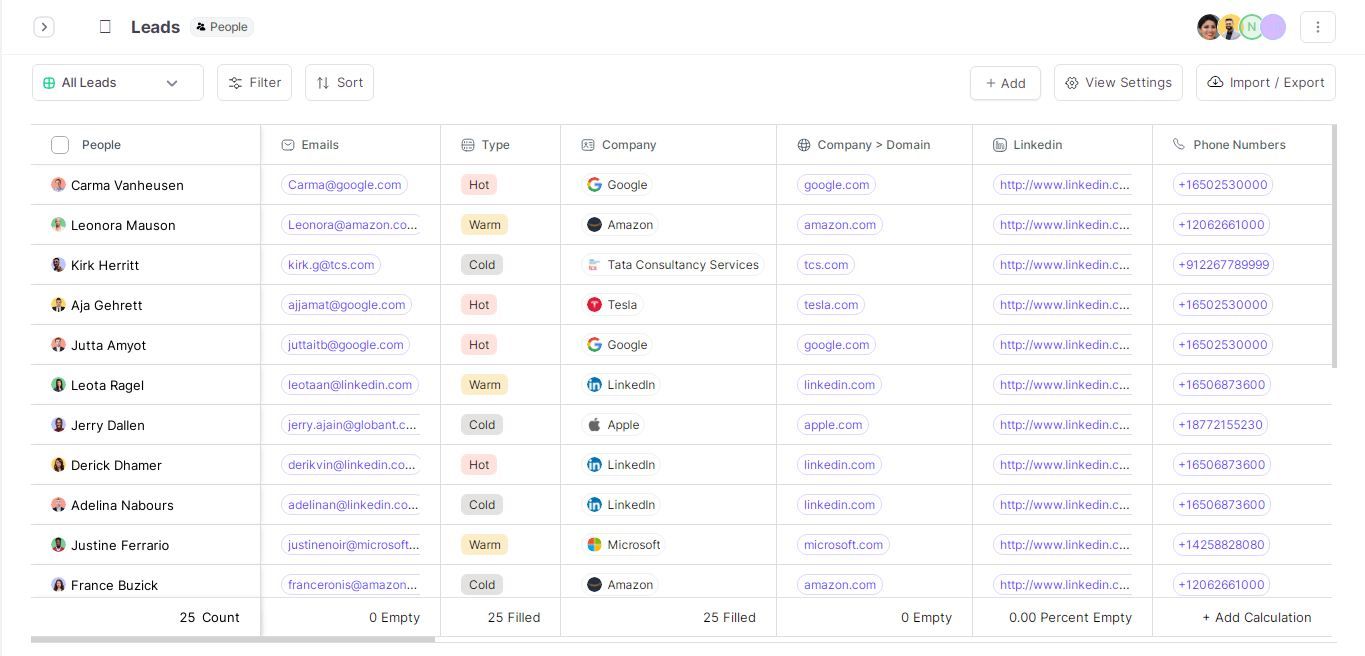
Foster collaboration between sales and marketing
Collaboration is the foundation of solid teamwork. By communicating effectively and truthfully, your team can develop the needed collaboration capabilities. As you might have heard the saying, “There is no I in team” and rightfully so.
Strong collaboration makes it fun for your sales and marketing teams to work more effectively. And aligns them toward the same goal.
Collaboration and communication are two sides of the coin. You cannot develop strong collaboration without proper communication and without the understanding of how to collaborate, you cannot have clear communication.
That’s why, it is necessary to focus on both of these aspects at the same time, and down the line, your team might become so good that they would do it easily. Take a look at this video to know how to foster teamwork within your organization.
Measure sales performance
“You can’t manage what you don’t measure.” – Peter Drucker
If you don’t know how your sales team is performing, you can’t possibly think about the changes to make them more efficient.
It is critical for your sales enablement strategy that you regularly keep an eye on how well your efforts are performing. But you might ask, how can I choose which particular KPIs I need to track? I know it is challenging to find the right metrics to measure your sales performance. That’s why here are some metrics to get you started:
Total revenue generated
This metric tells you how much revenue you have generated over a period of time. This period can be a month, a quarter, six months, or a year.
Repeat customer rate
This indicator shows how many of your previous customers, who purchased your products once, made a second purchase in a certain period of time. It is calculated by dividing your repeat customers by the total customers times 100.
Conversion rate
It is a pretty straightforward indicator that tracks how efficiently your sales desk is converting leads into buyers. You can calculate it by dividing the number of prospects converted by the total number of prospects times 100.
Sales pipeline length
This indicates the time it takes to move a person from the first point of contact till they become a customer. A shorter sales pipeline shows that your sales process is working effectively.
Deal lost rate
This metric measures the percentage of leads that were lost during the sales pipeline. To find it out, take the leads that were not closed and divide them by the total number of forecasted leads.
Quota attainment
It refers to the ability of a sales agent to achieve the objectives given to him. Quota attainment tells you which employees are performing well and which ones are struggling so you can provide extra resources or training.
Customer lifetime value (CLV)
Lets you get an idea of the total revenue you can expect to generate from an average buyer as long as he/she is your customer. To calculate CLV, multiply the customer’s current value by the average buyer lifespan.
Determining which metrics to track is one thing, but you also need to have an analytics dashboard that actually lets you track them in real time. In addition to that, you need to ensure that the data is presented in an easy-to-understand format like charts or graphs.
Optimize your process
The final item to tick off in your sales enablement checklist is to keep improving your sales process to boost your growth. Sales enablement is an ongoing process. So you also need to continuously adapt to market trends and keep up with new tools and technologies.
Artificial intelligence (AI) has gotten a lot of interest in recent years and businesses are utilizing it in their sales process to lower the burden on their sales desk. With Zixflow’s AI-Wizard, you can generate personalized emails by entering just a few details about your prospects and save both time and energy.
Also, by using machine learning, you can keep almost all of your sales processes on autopilot or automate your sales process so that your sales team doesn’t need to do the same tasks every day and they can focus on more qualified leads.
Use this sales enablement checklist and set up your team for success
Well, there you have it. Your very own sales enablement checklist. This checklist will help you in implementing a sales enablement program for your business. I created this checklist in a step-by-step manner so it will be easy for you to follow and put it into action.
And if you need any assistance with any of these steps, reach out to Zixflow. The people here are well-versed in anything related to sales and marketing and will make you feel at home with your sales enablement process.
So, don’t hesitate to book a personalized demo at your convenience and Zixflow will make sure that you will find the solution to your problem.
